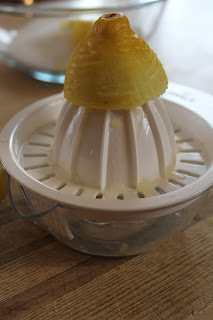Why Recycle Egg Shells?
How do egg shells help nourish plants and soil?
Recycled egg shells? Recycled styrofoam egg cartons? Are gardeners stingy and budget sensitive or just plain crazy? While they may be mindful of budgets, they are crazy about calcium rich soil! They are very skillful in utilizing natural resources for soil amendments.
As a Master Gardener and someone who is mindful of not leaving a foot print on the earth, I cringed when a well meaning friend handed me a bunch of styrofoam egg cartons she had saved. Oh, the thoughts racing through my head! Why would anybody use styrofoam in this day and age? Does't she know what that type of carton does to our landfills, our earth? I don't want to be seeing styrofoam popping up from the earth in year to come...yes, my thoughts went on and on. It was a year or so later (yes, I stuffed them in a back closet and left them for that long refusing to use "styrofoam.") before I made the connection that these NOT SO ENVIRONMENTALLY friendly cartons would actually make great trays for holding egg shell planters! They are water proof so they protect surfaces and hold extra water as needed. And of course, the important thing-they hold the egg shell perfectly. I now take care of those cartons I was so mortified with, saving them after each use for years ahead. None of them have a cost to me and it is a great way to recycle and reuse. Compare that to the cost of buying seedling trays...
So why recycle egg shells? How do they nourish the soil? Egg shells are rich in calcium! Calcium is a very important nutrient in both plant and soil, with only nitrogen and potassium required in larger amounts by plants. It is brought into the plant by water the plant takes up. While we typically tend to see calcium supplemented with the use of lime, egg shells are also a great choice! And, a staple in most homes. Since I raise laying hens for my own, fresh, organic, free range eggs, I appreciate being able to use my own natural resources.
Role of calcium in plants and soil
- Plays critical role in the metabolic process of other nutrients uptake and carbohydrate removal.
- Neutralizes cell acids.
- Strengthens cell wall structure.
- Improves soil structure in heavy clay soils.
- Binds organic matter to clay.
- Decreases sodium content in soil.
- Protects plants against heat stress, diseases, fungi, and bacteria.
- Affects fruit quality
Every plant needs calcium to grow, without adequate amounts, plants experience a variety of problems.
Signs of calcium deficiency
- Brown roots, stunted growth.
- Bulb and fruit abnormalities/damage.
- Necrosis at tips in young leaves and deformed leaves.
- Chlorosis.
Using a calcium spray can yield a higher crop of tomatoes, squash, and make a difference between a sweet/tart to bitter apple. You can make your own calcium spray by bringing 20 eggs in 1 gallon of water in a covered pan to a rolling boil. Once boiling, remove from heat and let cool for 24 hrs. Strain water of shell pieces and store in air tight container in a cool, dark place. Use the spray lightly on your calcium deficient plants,or use lightly to fertilize.
It is important to note that acidic soil is often associated with calcium, however, this is not the case. Whenever you add a nutrient to the soil, you change the balance. You may need to adjust your nitrogen and potassium levels. A good soil has a pH 7.
I love using the shells to start my seedlings. When the seedling is ready to be planted into the ground, I gently break the shell before planting it directly into the soil to help the roots spread easier. By using the shells as a planter, I double the recycling power of them as they also add calcium to the soil.
You do not have to break the shells up into tiny pieces or grind into powder if using in the soil, they will eventually break down on their own, it just helps them to decompose quicker if you break up the shells. And don't forget your compost! Toss your unused shells into the compost pile!
Share your gardening recycling and soil amendments with us! Nourish our ideas as you nourish your garden!
























